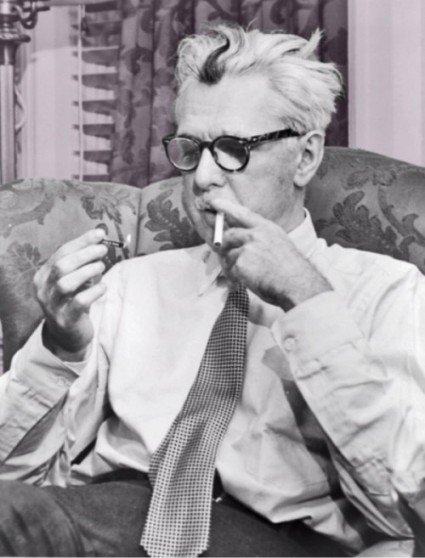
As a young man, New Yorker writer and cartoonist James Thurber worked as a code clerk at the American Embassy in Paris. During his time there, Paris hosted the 1919 Inter-Allied Games, a one-time sporting event open to those who had served in the armed forces of WWI. The sports featured at the event included wrestling, rifle marksmanship, and soccer (the last of which Thurber did not enjoy at all). Below, Thurber details his impressions of the event to his brothers.
Wednesday, June 25, 1919
Dear Brothers Bob and Bill:
…The Games opened Sunday with beaucoup fanfare and waving of gonfalons, and I supposed the papers back there carry full accounts of the proceedings….I have to work Sunday afternoons, but I don’t mind it so much because by so doing I get all of Tuesday off. And therefore Tuesday, yesterday, was my first day at the games…
Yesterday was a perfect day for the events, with a bright sun, pretty warm air, but not too chaude, and no clouds of any kind to obscure the brilliance of the affair. I have never seen the Yale Bowl, as I need not tell you, but I imagine this darn thing out near Paris comes about as close to it as any other stadium there is. It is, anyhow, one vast circle of concrete, sitting on one side of which places you in a position where you have to strain a neck and an eye in order to make out the people distinctly on the other side. The space in the center, in other words, the field itself, is divided up into all the cinder tracks and dirt spaces and jumping bars that Ohio Field has on the occasion of Le Grand Six…
There is a regularly arranged forest of flag staffs around the circular track that forms the periphery of the field and on which the hurdles and long runs are staged, as at O. Field and all other such places. And huge silk new flags of all the allied nations whip the air into a scrambled rainbow effect. Around the back of the stadium another series of gonfalons are nailed, and the flags alone would add enough color to the scene, let alone the dozen different uniforms that dash and prance and hop and swirl about…the different colored trunks of the prize fighters and wrestlers, the flagrant flare of the loudly striped sweaters of the seconds and trainers…orange and white…red and blue…and all sorts of startling combinations. Then the attire of the soccer teams, the splashes of national colors on the chests of the runners…and last but not least the brilliant array of uniforms in the stands and boxes. So that the stadium is like a huge kettle into which some Giantess of a witch with a savage’s appetite for bright colors, had dumped twenty different kinds of material and fifty different dyes, stirred them up in the middle and then tossed them with a big stick around the field, onto the flag staffs, into the stands ’n everywhere…
I have about as much interest in [soccer games] as a Russian Wolf Hound evinces in the V shaped motor of the Cadillac engine. In the afternoon, however, I had to sit through two of the things…
France defeated Roumania in what one or two of the papers called a brilliant game of soccer. Might just as fittingly speak of a dashing iceman or a soggy desert.
The Arabian sabre combat was very wonderful as far as cleverness in flailing a sharp weapong [sic] right in a brother’s face without clipping off a nose or a cheek, but it was so darn funny in the various dances a la Al Jolson and “no news for the news man” which they would suddenly waft into, away from each other, just when the give and take was at its roughest. The Americans in the stands were tickled to death and cheered and applauded, so that the Arabians thought they were getting by wonderfully, whereas the Americans, and most of the other onlookers for that matter, were overlooking the marvelous hand and arm work because the la dee da Pavlowa accessories were so killing, so to speak. The camel race was picturesque all right with true sons of the desert riding real ships of the desert, but the old boys weren’t much at taking a curve on high, being content just to keep on going, across lots, towards the exit. Finally two of them ended up with a fairly close finish, a pacin’ fool defeating a trottin’ bird…
Well, this day is drawing to a fini, and it is already the second that I have put in on this story of the games and one thing another, so I will not go any further.
Hoping you will do the same, I am always
Jamie
From The Thurber Letters: The Wit, Wisdom, and Surprising Life of James Thurber. Edited by Harrison Kinney, with Rosemary Thurber. New York: Simon & Schuster, 2003, p. 44-45.
FURTHER READING
See the promotional poster for the first and only Inter-Allied Games.
Watch “The Unicorn in the Garden”, a 1953 animated cartoon based off of Thurber’s short story and illustrations.
Join the Wall Street Journal Book Club’s discussion of Thurber’s The 13 Clocks, featuring discussion questions from author Neil Gaiman.


